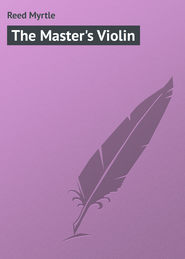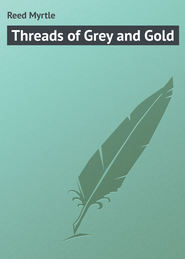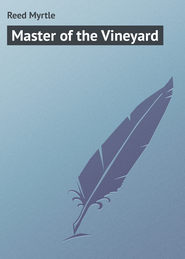По всем вопросам обращайтесь на: info@litportal.ru
(©) 2003-2024.
✖
The Myrtle Reed Cook Book
Настройки чтения
Размер шрифта
Высота строк
Поля
Look the fruit over carefully. Nothing pleases a fly so much as to die and be mistaken for a huckleberry. Serve with cracked ice, with sugar or cream, or both.
MUSKMELONS
Keep on ice till the last moment. Cut crosswise, take out the seeds with a spoon, and put a cube of ice in each half. Green leaves on the plate are a dainty touch.
ORANGES
Serve with fruit-knives, or in halves with spoons – either the orange-spoon which comes for that purpose, or a very heavy teaspoon. Another way is to remove the peel, except a strip an inch wide at the equator, cut at a division line and straighten out the peel, taking care not to break off the sections. Or, the fruit may be peeled, sliced, and served on plates with sugar.
PEACHES
Wipe with a dry cloth and serve with fruit-knives. Or, if you think much of your breakfast napkins, peel and cut just before serving, as they discolor quickly. Serve with cracked ice, or with cream. Hard peaches may be baked, as apples are, and served cold with cream. Stewed peaches may be served on crusts.
PEARS
Serve as they come, with fruit-knives. Hard pears may be baked or stewed according to directions previously given.
PINEAPPLE
Peel, cut out the eyes, and shred from the core with a silver fork. Sprinkle with sugar and keep on ice some hours before serving. Pineapple is the only fruit known to have a distinct digestive value, and it works most readily on starches. It combines pleasantly with bananas.
PRUNELLES
These are soaked, and boiled in the water in in which they are soaked, with the addition of a very little sugar. Dried apricots, blackberries, cherries, nectarines, and prunes are cooked in the same way. They may also be steamed and afterwards sprinkled with sugar.
PRUNES
These are no longer despised since the price has gone up, and the more expensive kinds are well worth having. A bit of lemon-peel or spice may flavor the syrup acceptably, and they are especially healthful in combination with cereals, according to recipes previously given.
QUINCES
Peel, stuff the cores with sugar, and bake according to directions given for apples. A little lemon may be used in the syrup for basting.
RASPBERRIES AND STRAWBERRIES
These delicious berries should not be washed unless absolutely necessary, nor should they be insulted with sugar and cream. If very sour, strawberries may be dipped in powdered sugar. Large, fine ones are served with the stems and hulls on. Raspberries, if ripe, seldom need sugar. Cracked ice is a pleasing accompaniment.
RHUBARB
I. Peel, cut into inch-lengths, and stew with plenty of sugar. Serve cold.
II. Cut, but do not peel, boil five minutes, then change the water and cook slowly with plenty of sugar till done.
III. Baked.– Do not peel. Cut into inch-pieces, put into a buttered baking-dish or stone jar, sprinkle plentifully with sugar, and bake slowly. It will be a rich red in color.
IV. Cook on crusts. See Cherries IV (#Page_33).
V. Add a handful of seeded raisins to rhubarb cooked in any of the above ways when it is about half done. Figs, dates, and other dried fruits, used with rhubarb, make a combination pleasing to some.
TANGERINES
See Oranges (#pgepubid00022).
WATERMELON
Like muskmelon, watermelon must be very thoroughly chilled. Serve in slices from a platter or on individual plates, removing the rind before serving, if desired; or cut the melon in half, slice off the lower end so that it may stand firmly, and serve the pulp from the shell with a silver spoon. Ice pounded to snow is a pleasant addition to any fruit, when the thermometer is ninety-five or six in the shade.
CEREALS
So many breakfast foods are upon the market that it would be impossible to enumerate all of them, especially as new ones are appearing continually. Full and complete directions for cooking all of them are printed upon the packages in which they are sold. It may not be amiss to add, however, that in almost every instance, twice or three times the time allowed for cooking would improve the cereal in taste and digestibility.
The uncooked cereals are many. A wise housekeeper will use the uncooked cereals when she has no maid. “A word to the wise is unnecessary.”
Pleasing variety in the daily menu is secured by getting a different cereal each time. In this way, it takes about a year to get back to the beginning again, and there is no chance to tire of any of them.
Cereals should always be cooked in a double boiler; and soaking over night in the water in which they are to be cooked, where it is not possible to secure the necessary time for long cooking, will prove a distinct advantage. Leftover cereals should be covered with cold water immediately, in the double boiler, and kept in a cool place until the next day. Bring slowly to a boil, and cook as usual. In the hot weather, cereals may be cooked the day before using, moulded in custard-cups, and kept in the ice-box over night. They are very acceptable when served ice-cold, and, if moulded with fruit, or served with fruit on the same plate, so much the better.
Pearled wheat, pearled barley, and coarse hominy require five cupfuls of water to each cup of cereal, and need from four to six hours’ cooking. Coarse oatmeal and fine hominy must be cooked from four to six hours, but need only four cupfuls of water to each cup of cereal. Rolled wheat and rolled barley are cooked two hours in three times as much water as cereal; rice and rolled oats, with three times as much water, will cook in one hour. Farina, with six cupfuls of water to each cupful of cereal, also cooks in an hour; cerealine flakes cook in thirty minutes, equal parts of water and cereal being used.
Salt must be added just before cooking begins. All cereals are richer if a little milk is added to the water in which they are cooked.
To cook cereals in a double boiler, put the water into the inner kettle, the outer vessel being from half to two thirds full, and when it is boiling furiously, sprinkle in the cereal, a few grains at a time, and not so rapidly as to stop the boiling. When cereals are eaten cold, they require a little more liquid.
BOILED BARLEY
Wash the barley in several waters, cover with cold water; bring to a boil, drain, cover with fresh boiling water, add a little salt, and cook slowly for four hours.
BARLEY GRUEL
Wash half a cupful of pearled barley in several waters; put it into a double boiler with eight cupfuls of water and half an inch of stick cinnamon. Boil for two hours, strain, sweeten, and add two wine glasses of port. Keep in a cool place and reheat when required. An invaluable breakfast cereal for a convalescent.
STEAMED BARLEY
Cooked one cupful of pearled barley in a double boiler four hours, with four cupfuls of water and a little salt. In the morning, add a cupful of boiling water or milk, stir occasionally, reheat thoroughly, and serve.
BREWIS
Dry bread in the oven so slowly that it is a light brown in color. Crush into crumbs with the rolling-pin and sift through the frying-basket. Measure the milk, salt it slightly, and bring to a boil. Put in half as much of the dried crumbs. Boil five or ten minutes, season with butter, pepper, and salt, and serve at once with cream. It must be stirred all the time it is cooking. By omitting the butter, it may be served with sugar. Brown, rye, graham, or corn bread may be mixed with the white bread to advantage. The dried and sifted crumbs of brown bread, when served cold with cream, taste surprisingly like a popular cereal which etiquette forbids us to mention. This is a good way to use up accumulated crumbs.
CORN-MEAL MUSH
The best meal comes from the South. It is white, moist, and coarse, and is called “water ground.” It is a very different proposition from the dry, yellow powder sold in Northern groceries. For mush, use four times as much water as meal. Salt the water, and sprinkle in the meal very slowly when it is at a galloping boil. Boil an hour or more, stirring frequently. A better mush is made by using half milk and half water. Serve hot or cold with cream, or milk, and sugar. If wanted for frying, wet a pan in cold water, pour in the hot mush, and let cool.
CORN AND WHEAT PORRIDGE
Half a cupful of corn-meal and half a cupful of flour. Make into a batter with cold water and put into two cupfuls of boiling water. Stir often and cook half an hour or more, then add four cupfuls of boiling milk. Cook half an hour longer, stirring often. Serve hot or cold, with cream and sugar.
CORN MUSH OR HASTY PUDDING
MUSKMELONS
Keep on ice till the last moment. Cut crosswise, take out the seeds with a spoon, and put a cube of ice in each half. Green leaves on the plate are a dainty touch.
ORANGES
Serve with fruit-knives, or in halves with spoons – either the orange-spoon which comes for that purpose, or a very heavy teaspoon. Another way is to remove the peel, except a strip an inch wide at the equator, cut at a division line and straighten out the peel, taking care not to break off the sections. Or, the fruit may be peeled, sliced, and served on plates with sugar.
PEACHES
Wipe with a dry cloth and serve with fruit-knives. Or, if you think much of your breakfast napkins, peel and cut just before serving, as they discolor quickly. Serve with cracked ice, or with cream. Hard peaches may be baked, as apples are, and served cold with cream. Stewed peaches may be served on crusts.
PEARS
Serve as they come, with fruit-knives. Hard pears may be baked or stewed according to directions previously given.
PINEAPPLE
Peel, cut out the eyes, and shred from the core with a silver fork. Sprinkle with sugar and keep on ice some hours before serving. Pineapple is the only fruit known to have a distinct digestive value, and it works most readily on starches. It combines pleasantly with bananas.
PRUNELLES
These are soaked, and boiled in the water in in which they are soaked, with the addition of a very little sugar. Dried apricots, blackberries, cherries, nectarines, and prunes are cooked in the same way. They may also be steamed and afterwards sprinkled with sugar.
PRUNES
These are no longer despised since the price has gone up, and the more expensive kinds are well worth having. A bit of lemon-peel or spice may flavor the syrup acceptably, and they are especially healthful in combination with cereals, according to recipes previously given.
QUINCES
Peel, stuff the cores with sugar, and bake according to directions given for apples. A little lemon may be used in the syrup for basting.
RASPBERRIES AND STRAWBERRIES
These delicious berries should not be washed unless absolutely necessary, nor should they be insulted with sugar and cream. If very sour, strawberries may be dipped in powdered sugar. Large, fine ones are served with the stems and hulls on. Raspberries, if ripe, seldom need sugar. Cracked ice is a pleasing accompaniment.
RHUBARB
I. Peel, cut into inch-lengths, and stew with plenty of sugar. Serve cold.
II. Cut, but do not peel, boil five minutes, then change the water and cook slowly with plenty of sugar till done.
III. Baked.– Do not peel. Cut into inch-pieces, put into a buttered baking-dish or stone jar, sprinkle plentifully with sugar, and bake slowly. It will be a rich red in color.
IV. Cook on crusts. See Cherries IV (#Page_33).
V. Add a handful of seeded raisins to rhubarb cooked in any of the above ways when it is about half done. Figs, dates, and other dried fruits, used with rhubarb, make a combination pleasing to some.
TANGERINES
See Oranges (#pgepubid00022).
WATERMELON
Like muskmelon, watermelon must be very thoroughly chilled. Serve in slices from a platter or on individual plates, removing the rind before serving, if desired; or cut the melon in half, slice off the lower end so that it may stand firmly, and serve the pulp from the shell with a silver spoon. Ice pounded to snow is a pleasant addition to any fruit, when the thermometer is ninety-five or six in the shade.
CEREALS
So many breakfast foods are upon the market that it would be impossible to enumerate all of them, especially as new ones are appearing continually. Full and complete directions for cooking all of them are printed upon the packages in which they are sold. It may not be amiss to add, however, that in almost every instance, twice or three times the time allowed for cooking would improve the cereal in taste and digestibility.
The uncooked cereals are many. A wise housekeeper will use the uncooked cereals when she has no maid. “A word to the wise is unnecessary.”
Pleasing variety in the daily menu is secured by getting a different cereal each time. In this way, it takes about a year to get back to the beginning again, and there is no chance to tire of any of them.
Cereals should always be cooked in a double boiler; and soaking over night in the water in which they are to be cooked, where it is not possible to secure the necessary time for long cooking, will prove a distinct advantage. Leftover cereals should be covered with cold water immediately, in the double boiler, and kept in a cool place until the next day. Bring slowly to a boil, and cook as usual. In the hot weather, cereals may be cooked the day before using, moulded in custard-cups, and kept in the ice-box over night. They are very acceptable when served ice-cold, and, if moulded with fruit, or served with fruit on the same plate, so much the better.
Pearled wheat, pearled barley, and coarse hominy require five cupfuls of water to each cup of cereal, and need from four to six hours’ cooking. Coarse oatmeal and fine hominy must be cooked from four to six hours, but need only four cupfuls of water to each cup of cereal. Rolled wheat and rolled barley are cooked two hours in three times as much water as cereal; rice and rolled oats, with three times as much water, will cook in one hour. Farina, with six cupfuls of water to each cupful of cereal, also cooks in an hour; cerealine flakes cook in thirty minutes, equal parts of water and cereal being used.
Salt must be added just before cooking begins. All cereals are richer if a little milk is added to the water in which they are cooked.
To cook cereals in a double boiler, put the water into the inner kettle, the outer vessel being from half to two thirds full, and when it is boiling furiously, sprinkle in the cereal, a few grains at a time, and not so rapidly as to stop the boiling. When cereals are eaten cold, they require a little more liquid.
BOILED BARLEY
Wash the barley in several waters, cover with cold water; bring to a boil, drain, cover with fresh boiling water, add a little salt, and cook slowly for four hours.
BARLEY GRUEL
Wash half a cupful of pearled barley in several waters; put it into a double boiler with eight cupfuls of water and half an inch of stick cinnamon. Boil for two hours, strain, sweeten, and add two wine glasses of port. Keep in a cool place and reheat when required. An invaluable breakfast cereal for a convalescent.
STEAMED BARLEY
Cooked one cupful of pearled barley in a double boiler four hours, with four cupfuls of water and a little salt. In the morning, add a cupful of boiling water or milk, stir occasionally, reheat thoroughly, and serve.
BREWIS
Dry bread in the oven so slowly that it is a light brown in color. Crush into crumbs with the rolling-pin and sift through the frying-basket. Measure the milk, salt it slightly, and bring to a boil. Put in half as much of the dried crumbs. Boil five or ten minutes, season with butter, pepper, and salt, and serve at once with cream. It must be stirred all the time it is cooking. By omitting the butter, it may be served with sugar. Brown, rye, graham, or corn bread may be mixed with the white bread to advantage. The dried and sifted crumbs of brown bread, when served cold with cream, taste surprisingly like a popular cereal which etiquette forbids us to mention. This is a good way to use up accumulated crumbs.
CORN-MEAL MUSH
The best meal comes from the South. It is white, moist, and coarse, and is called “water ground.” It is a very different proposition from the dry, yellow powder sold in Northern groceries. For mush, use four times as much water as meal. Salt the water, and sprinkle in the meal very slowly when it is at a galloping boil. Boil an hour or more, stirring frequently. A better mush is made by using half milk and half water. Serve hot or cold with cream, or milk, and sugar. If wanted for frying, wet a pan in cold water, pour in the hot mush, and let cool.
CORN AND WHEAT PORRIDGE
Half a cupful of corn-meal and half a cupful of flour. Make into a batter with cold water and put into two cupfuls of boiling water. Stir often and cook half an hour or more, then add four cupfuls of boiling milk. Cook half an hour longer, stirring often. Serve hot or cold, with cream and sugar.
CORN MUSH OR HASTY PUDDING











